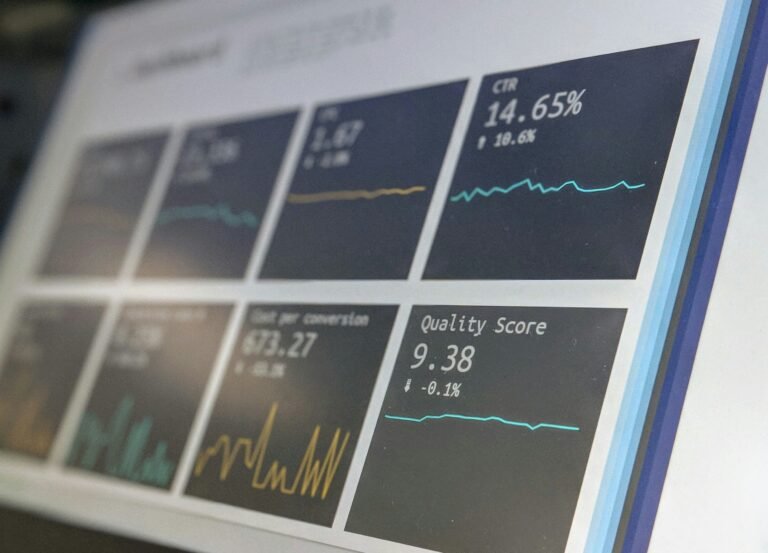The Data-Driven Approach to Sales for Maximum Efficiency and Growth
In an increasingly competitive business environment, sales teams can no longer rely on old-school methods like cold calling or gut-feeling decisions to meet targets. The key to thriving in today’s sales landscape is embracing a data-driven approach that uses real-time insights, predictive analytics, and customer behavior patterns to streamline the sales process and close more deals. By leveraging data effectively, sales teams can improve productivity, identify high-potential leads, and ultimately increase revenue.
What Does a Data-Driven Approach to Sales Mean?
A data-driven approach to sales refers to the systematic use of data to guide every aspect of the sales process, from prospecting and lead generation to deal closure and customer retention. Rather than making decisions based on intuition, data-driven sales teams rely on information—such as customer interactions, sales performance metrics, market trends, and predictive insights—to inform their strategies and actions.
This approach not only helps sales teams work smarter but also fosters greater alignment between marketing and sales, leading to more efficient resource allocation and better outcomes.
Why a Data-Driven Approach to Sales is Essential
- Identifying High-Quality Leads Not all leads are created equal, and sales teams often waste valuable time pursuing prospects that are unlikely to convert. A data-driven approach allows businesses to prioritize leads based on their likelihood to convert, using metrics such as engagement history, demographic information, and behavioral patterns. By focusing on high-quality leads, sales reps can spend more time nurturing prospects who are more likely to become paying customers.
- Personalized Sales Pitches Today’s buyers expect tailored experiences, and a one-size-fits-all sales pitch no longer works. Data-driven sales enable teams to personalize their outreach by understanding a prospect’s pain points, needs, and interactions with the brand. By analyzing data from CRM systems, email campaigns, and website interactions, sales reps can craft messages that speak directly to the prospect’s situation, dramatically increasing the chances of closing a deal.
- Predictive Sales Forecasting Accurate forecasting is critical for any sales organization, and a data-driven approach can significantly improve forecasting accuracy. By analyzing historical sales data, customer behaviors, and market trends, businesses can predict future sales performance with greater precision. This helps sales managers allocate resources more effectively, set realistic targets, and adjust strategies as needed to stay on track.
- Optimizing Sales Processes Data-driven insights allow businesses to identify bottlenecks in the sales process and streamline operations. For example, if data reveals that deals often stall at a particular stage, sales leaders can intervene with new training, tools, or process adjustments. Automating repetitive tasks, such as follow-ups or data entry, also frees up sales reps to focus on more strategic activities, improving overall efficiency.
- Improving Sales Rep Performance A data-driven approach allows sales managers to monitor individual and team performance with precision. By tracking key metrics—such as call activity, email open rates, and conversion rates—managers can identify strengths and areas for improvement. They can also provide tailored coaching based on data-backed insights, helping reps enhance their skills and meet or exceed their sales quotas.
- Building Stronger Relationships Closing a deal is just the beginning of a customer relationship. By continuing to collect and analyze data on customer interactions, preferences, and purchasing behavior, sales teams can nurture long-term relationships, identify upsell and cross-sell opportunities, and reduce churn. A data-driven approach to customer management ensures that reps are always one step ahead, offering timely solutions that keep customers engaged and loyal.
Key Areas Where a Data-Driven Sales Approach Thrives
- Lead Scoring and Prioritization Lead scoring is one of the most valuable applications of a data-driven sales strategy. By assigning numerical values to leads based on factors such as demographic fit, engagement level, and behavior, sales teams can prioritize their efforts. Predictive lead scoring, which uses algorithms to analyze historical data, can further improve accuracy, ensuring that reps focus on the most promising leads.
- Sales Automation Repetitive tasks—like sending follow-up emails or updating CRM records—can eat into a sales rep’s time. A data-driven approach helps identify tasks that can be automated, boosting efficiency without sacrificing personalization. Sales automation tools, powered by data, enable reps to automatically send personalized emails based on triggers (like a prospect visiting a pricing page), track engagement, and schedule follow-ups at optimal times.
- Performance Monitoring and Optimization Sales teams that rely on data can track performance metrics across every stage of the sales funnel. By analyzing conversion rates, deal velocity, and average sales cycle length, sales managers can quickly spot underperformance and take corrective action. This data-driven insight helps teams optimize their strategies on the go, whether it’s adjusting a pitch, changing prospecting methods, or reallocating resources to higher-performing reps.
- Customer Lifetime Value (CLV) Prediction CLV is a critical metric that indicates the total revenue a business can expect from a customer over the entirety of the relationship. By analyzing purchase frequency, order size, and customer engagement, data-driven sales teams can predict CLV more accurately. This insight allows businesses to focus on acquiring and retaining high-value customers and offers opportunities for upselling and cross-selling.
- Tailored Deal Strategies Data-driven sales teams don’t rely on a single approach to closing deals. Instead, they use data to customize strategies based on the specific prospect and situation. By analyzing data from past deals, sales reps can identify which negotiation tactics, pricing strategies, and deal terms are most likely to work with each prospect. This flexibility leads to higher win rates and more successful negotiations.
- Alignment with Marketing Data-driven sales strategies create closer alignment between sales and marketing teams. Marketing can provide sales with detailed insights into customer behavior, campaign performance, and lead quality, helping sales reps tailor their outreach. Similarly, sales can share data on which leads convert, allowing marketing to refine their targeting and messaging. This alignment ensures both teams are working toward the same goals and increases overall efficiency.
How to Implement a Data-Driven Sales Strategy
- Invest in the Right Tools To implement a data-driven sales strategy, businesses must invest in the right tools. A robust CRM system is essential for tracking customer interactions and storing lead data. Sales automation tools and AI-driven analytics platforms can also help streamline processes and provide actionable insights. Popular tools include Salesforce, HubSpot, and Zoho CRM.
- Focus on Key Metrics Not all data is valuable. Sales teams must identify the key metrics that align with their goals. This might include metrics like sales velocity (how quickly deals move through the pipeline), customer acquisition cost (CAC), and win rates. Focusing on the right metrics allows teams to measure success accurately and make informed adjustments.
- Train Your Sales Team A data-driven approach requires sales reps to have the skills to interpret and act on data. Training is essential to ensure they understand how to use CRM systems, interpret reports, and adjust their strategies based on data insights. Ongoing training can also keep teams updated on new tools and technologies that enhance their data-driven capabilities.
- Continuously Analyze and Optimize A data-driven sales approach is not a set-it-and-forget-it strategy. Teams should continuously analyze their data, monitor performance, and make iterative improvements to their sales processes. Regular reviews of key metrics help ensure that strategies remain aligned with evolving customer behaviors and market trends.
Conclusion
A data-driven approach to sales transforms how businesses interact with leads and customers, driving efficiency, personalization, and profitability. By leveraging insights from data, sales teams can improve every aspect of the sales process—from lead generation to deal closure—while building stronger, longer-lasting relationships with customers. In a world where sales success is increasingly dependent on real-time insights and predictive analytics, data-driven sales strategies are not just advantageous; they’re essential for staying competitive and thriving in today’s marketplace.






